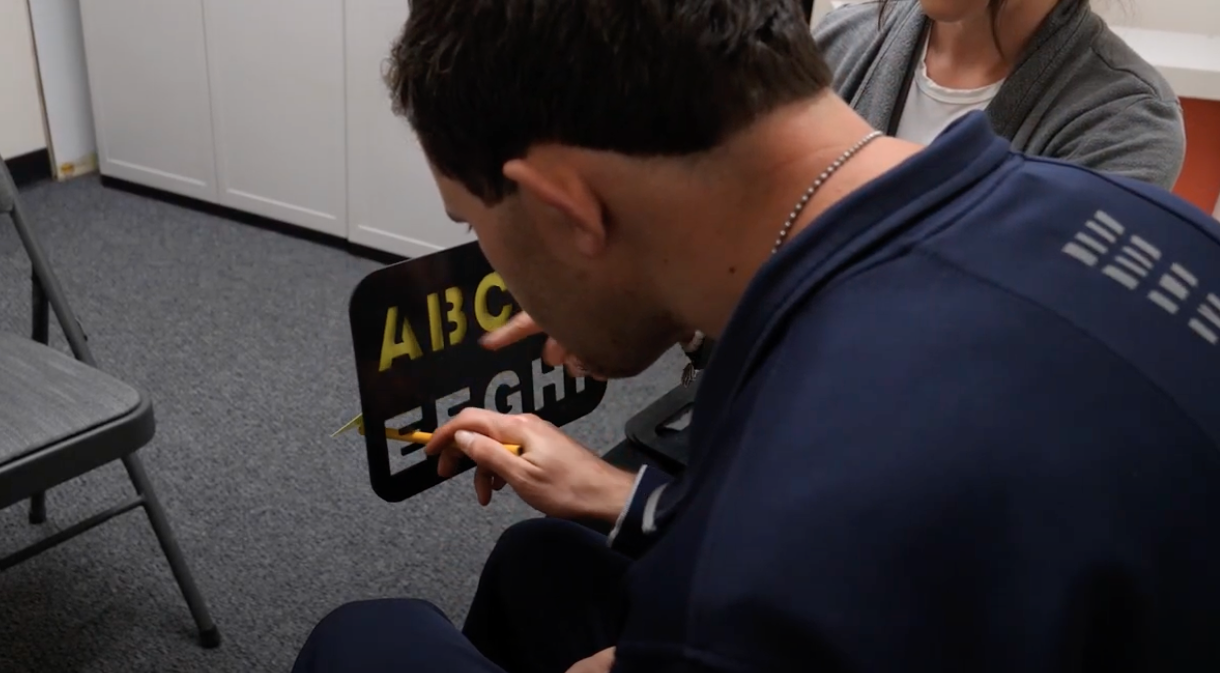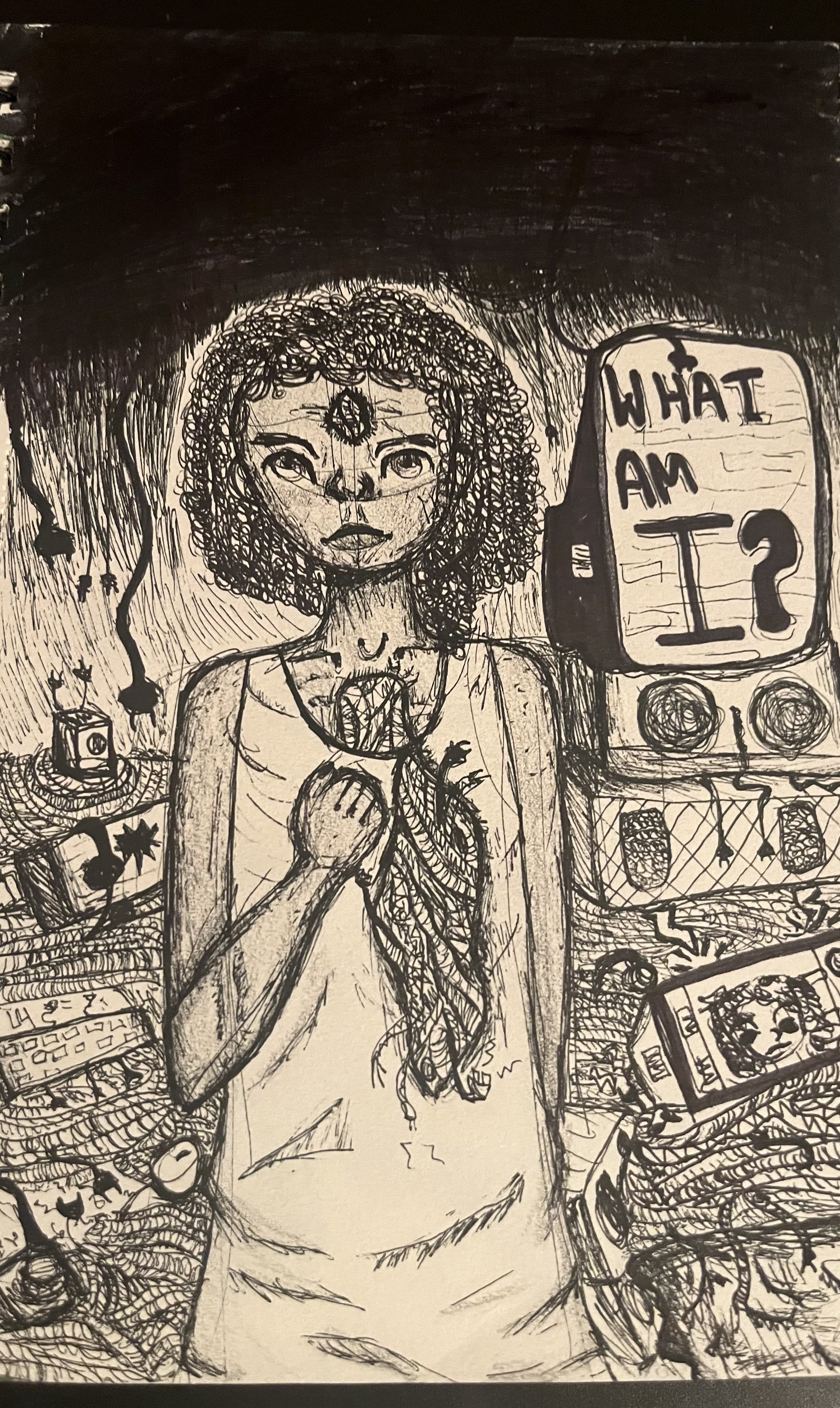2024 Submissions
Parting Ways
I took this photo while on a summer trip in Japan. On one of our last nights in Tokyo, I went out on a walk to try and capture some of Shinjuku's vibrant nightlife. As it neared midnight, it began to rain; and the streets that had been lively hours before became progressively empty. While making my way back to the hotel, I came across this group of businessmen huddled under their clear plastic umbrellas. I presume they were about to head their separate ways home for the night, but before they did so I was able to take this photo. I think the scene captures the peaceful atmosphere of late-night Shinjuku quite well; representing a time in which remaining restaurants close, the streets clear out, and only a few stragglers are left roaming the light-soaked streets.
Art of Struggle
This story behind my dancing consists of clips of an interview with my mom about her legacy growing up as an immigrant from Cambodia in America, “The Land of Opportunity.”
mirage authenticity
During a Chinatown field trip for my English class last year, our tour guide told us the iconic architecture that lined the Chinatown streets was modeled after the mere idea of Chineseness, a marketing tourist trap designed in the image of China to a white state. I wonder, sometimes, how I, Chinese and learning to be so under an American government, might be any different. This piece is a simultaneous love letter to and critique of authenticity; after all, amidst the tourist trap architecture are real Chinese people and exports and community, old ladies wheeling carts of groceries and lacquered wooden boxes and plasticky trinkets. I am authentically myself and inauthentically Chinese, and maybe more alive for it.
Silence
Silence is a bit of an indulgent song. Inspired by Friedrich Nietzsche, it features histrionic vocals, punctilious melodies, and harsh lyrics. Within its radical outfit lies several thematic interrogations. There are two distinct vocal characters in “Silence” - first is a solitary, deep man (most directly influenced by Nietzsche’s writings and legacy); the other is the “crowd” in general.
Tinikling
Tinikling is one of the Philippine's traditional dances. I was inspired to compose the motions and the colors of the technical, three-quarter-time bamboo dancing because I wanted to share a beautiful piece from my culture that I had once rejected. Being born in the Philippines and immigrating during elementary school has formidably impacted my cultural identity. It took years of educating myself about the effects of colonialism on my identity for me to start appreciating my culture. I indulged myself in artwork produced by Filipino and Filipino-American artists, and when I visited my hometown, I took the time to learn Tinikling. Although I spent countless hours drilling different steps, my bare feet dirty, sore, and pinched by the bamboo, listening to a "1-2 click.." repeatedly in the hot, humid Philippines air, I was in LOVE with this dance. I loved the challenge it gave me, the sound of the bamboo clicking, the colors, and the graceful forms of Filipino folk dance. My love for this dance and culture inspired me to gather my friends, teach them the primary steps of Tinikling, and compose this picture. I wanted to present three things through this composition: the motion blur to demonstrate the challenging mobility that this dance demands, the setting of the hill to achieve a background that amplified the vivid colors of the traditional baro't saya that my friends are wearing, and the stillness of the girl in the center to demonstrate one of the graceful folk dance forms.
Listen to Us
As a storyteller, I am always looking for a new perspective or idea to share with the world. With this film, I had the challenge of trying to convey a powerful message in a 5 minute documentary.
dragon boat racing / INTERPRET
I'm sixteen years old and I was raised by immigrant parents in the Bay Area. This collection is built around that identity. The first poem, “dragon boat racing”, explores many of my personal experiences with growing up in an immigrant family, and the way these stories start and "end". The title follows a traditional Chinese festival celebrated in the month of June, and in the poem, the narrator recalls things that their grandmother has told them: keeping quiet and remembering your blessings is the only way to create the American dream. The second poem, “INTERPRET”, was inspired by a trip to Thailand with a family friend nearly seven years ago. While it remains a work of fiction, it’s a look into my childhood and the people I’ve left behind. Tied together with themes of admiration and grief, this coming-of-age poem is never explicit in its immigrant nature, but it contrasts new world ideas with a dichotomic Asian upbringing in a moment of reflection. In this collection, I hope to show the nuances of an immigrant American childhood. I also hope that through these pieces, the reader will understand that these stories are not simply events set in the past. They remain dynamic and ever-changing in the present and future; when I write, I am able to retell this rich history. Immigration is never one thing entirely. My own culture shares Burmese and Chinese influences. Perhaps it will share an American one too.
Transcendental Etude No.10 (Appassionata) by F. Liszt
Franz Liszt's Transcendental Etudes are widely regarded as some of the most challenging and inspiring works in the piano repertoire. Composed during the 1830s and revised in the 1850s, these etudes were designed not only to showcase technical virtuosity but also to push the boundaries of pianistic expression. Out of the 12 etudes, I found No. 10 in F minor, often referred to as the "Appassionata," is a remarkable piece that embodies both technical brilliance and emotional depth. It stands as one of the most passionate and stirring compositions within the set of Transcendental Etudes. Liszt masterfully captures intense emotions through its dramatic melodies, powerful chords, and sweeping arpeggios. The piece alternates between moments of fiery passion and moments of tender introspection, allowing the pianist to convey a wide range of emotions. No. 10 also presents significant technical challenges. Its demanding passages include rapid octave runs, virtuosic arpeggios, and intricate fingerings that require precision, speed, and control. Music is a powerful artistic language that connects people beyond age, culture and background. Learning this etude is such an adventurous, inspiring and fulfilling musical experience for me. I hope that through my interpretation and performing of this piece, I could showcase my technical prowess, convey its passionate emotions, and leave a profound impact on both myself and my audiences.
Messages from the Stars
I've been a competitive dancer for 10 years. At last year's Hollywood Invitational Nationals Dance competition, I competed with this dance - "Messages from the Stars".
No Comfort in the Truth
My collage represents my struggle with God's existence. I grew up in a non-religious household, I knew people believed in God but I didn’t have time to think about that. But, as I get older some things that have happened felt like they were meant to be, like God had already planned my path. The more I got exposed to social media the more I saw of Islam and how much it called to me through Quran quotes. I feel like there is a future for my personal journey with Islam, but I am still scared of the question “Does God exist or not?” My fear of this question is represented through tears going down the woman’s face to a lover's embrace. Will I ever have true love like they do? Will I make it to Jannah, when I’m already lost at sea? I hope one day my deserted broken ship finds itself in the safe arms of a Mosque where I finally found what I had been looking for all along. I am still scared to take that first step in my journey because I fear I will be lost at sea forever if I don’t tether to Islam. There is no comfort in knowing the truth if Jannah and Jahannam exist or if the dark loneliness of infinity awaits us at the end of our life’s journey.
Climb - Symphony no. 1, "Sky," mvt. 1
The Sky symphony explores darkness and grandeur, solemness and awe. The listener follows a journey from the base of a mountain to its summit, and it is at the top where one experiences the epic infinity that is the sky.
Playin’
Over the years, I have been honing in my songwriting and production skills and techniques. This production was inspired by the works of Max Martin who is my idol. Recording this song went in stages. I began like any other song (messing around on the piano, hoping something good comes out).
Serenity
Serenity, best defined as a sublime state of calmness and inner tranquility, is a remarkable facet of existence. One day, I came across an image of an elderly Tibetan lady peacefully napping under the sun, and I was quickly motivated to capture the essence of her serene aura with the nuanced shades of colored pencil. Despite the passage of time reflected in the woman’s snowy hair and weather-beaten countenance, her heart emanates an unparalleled sense of tranquility, a state that we all aspire to in our daily lives. As I envision myself one day reaching her seasoned age, I aspire to emulate the remarkable composure and peace she embodies, transcending the external signs of how time passes to embrace an inner serenity that endures life's transitions.
Lady in White Dress
I try to understand everything I paint in order to depict it truly, and people have been one of the toughest by far. In this painting, I show my attempts at this in every fold of skin and fabric, every plane shift that reveals a new color to the world, to try and connect beautiful complexity to a cohesive whole. I love people, and I find almost everyone beautiful, but I can’t always say it, so I paint it instead. My artwork is my love. In my works, I emphasize one element that I find striking, and in this piece it’s her white dress that almost glows with its own light. The subtle folds and reflections pushed me to understand color and my medium of oil in order to convey the impression the clothing had on me. The time I spend painting helps me understand the details that make up the things I love, and look at the world differently every time, with new details and observations in mind. Although I capture different subjects every time, my fascination with the people and things around me remains the same, and I hope to share my appreciation each time.
The Green Storm
While visiting Canada over the summer, we would usually have to wait until at least 1am in order to see the northern lights. This night however, we heard everyone rushing outside at only around 10:30-11pm, while the sunset was still visible. The dancing lights were the strongest then of any other night, despite it not being very dark out. I knew this was a special and unusual moment, so I wanted to get the aurora and the sunset in the frame. With a long enough exposure, the stars became visible too. The challenge was that the lights were moving, so too long of an exposure and they would blur out of the photo. This photo shows the delicate balance of a long enough exposure to see the stars clearly, while not blowing out the sunset or allowing the aurora to disappear. I was also drawn to the swirling pattern of the aurora, something I had not seen in photos of the northern lights in the past.
Capricho Arabe by F. Tarrega arr. J. Peterson
Capricho Arabe was written in 1892 by Francisco Tarrega, who combined Spanish music with Arabian music. Playing Capricho Arabe on the ukulele means combining Spanish, Arabian, and Hawaiian influences, all in one piece.
Wizardly Tuesday Night
A wizard fellow is distraught after his soup has gotten a little bit too hot
Looming Meal
This piece was inspired by the work of Cristina Troufa. I specifically wanted to incorporate her use of foreshortening, negative space, and natural bright colors. This piece is 36x48 inches. My goal was to make the viewer feel small and looked down at, which I did by having the perspective be from the food on a table with people surrounding it eating the viewer. All the faces are mine, so it is a self portrait.
Wired in the Web
A show called "Serial Experiments Lain" inspired me to draw this artwork. The show was about a girl named "Lain" who slowly became obsessed with technology and she soon discovered "The Wired" which is a virtual world accessed through a "Navi", one of the many computers Lain built. I liked it because the show talked about Lain's spiral into questioning her identity as she became lost in the Wired, and the show brings out a message of overconsumption in the internet and the affects on one's identity. That is why my piece is called "Wired in the Web", the "Wired" is like connections and the "Web" is like the media, or the internet. The girl on the piece is representing that overconsumption of the internet, and wires are coming out of her because all her technology is turning into her, which is why she is shown saying "what am I?" as she is losing a part of her identity (both literally and figuratively).



















